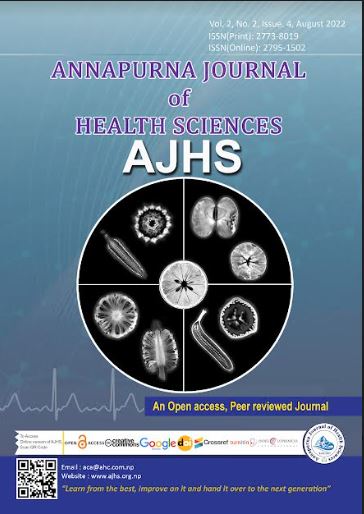Attitude of Doctors and Nurses towards Adverse Drug Reaction Reporting at a University Teaching Hospital
Keywords:
Adverse drug reaction reporting, Attitude, PharmacovigilanceAbstract
Introduction: Spontaneous reporting of adverse drug reaction (ADR) is the
main stay of pharmacovigilance. However the major limitation of this method
is underreporting as it depends entirely on the participation of the health care
professional. This study aimed to identify factors that discourage ADR reporting
and possible ways to improve ADR reporting.
Methods: This is a questionnaire based cross-sectional descriptive study employed
at a tertiary level teaching hospital from December 2020 to March 2021 after
approval from institutional review committee. All the doctors and nurses were
included in the study and the data were collected using structured questionnaire.
Results: Total numbers of participants were 283. Among them, 260(91.9 %)
had encountered a patient/s with ADR and 119(45.6%) had documented ADR.
However, there was no reporting to the pharmacovigilance centre/ unit of the
hospital.Out of 283 participants, 123 (43.5%) agreed that the major discouraging
factor to report ADR was unavailability of reporting form. Similarly decision
to report ADR depended on new reaction to an existing product 217(76.7%)
followed by seriousness of the reaction 213 (75.2%). The 245(86.7%) participants
have recommended to conduct awareness among healthcare professional and
208(73.3%) to train healthcare professional to improve ADR reporting.
Conclusion: Even though the large numbers of participants have encountered
patient/s with ADR but documentation of ADR is less. Further, none have
reported due to limited knowledge regarding“what, how and where to report
ADR”? In addition to these, unavailability of ADR reporting form was the major
discouraging factor to report ADR.
Downloads
Downloads
Published
How to Cite
Issue
Section
License

This work is licensed under a Creative Commons Attribution 4.0 International License.
This license allows reusers to distribute, remix, adapt, and build upon the material in any medium or format, so long as attribution is given to the creator. The license allows for commercial use.




